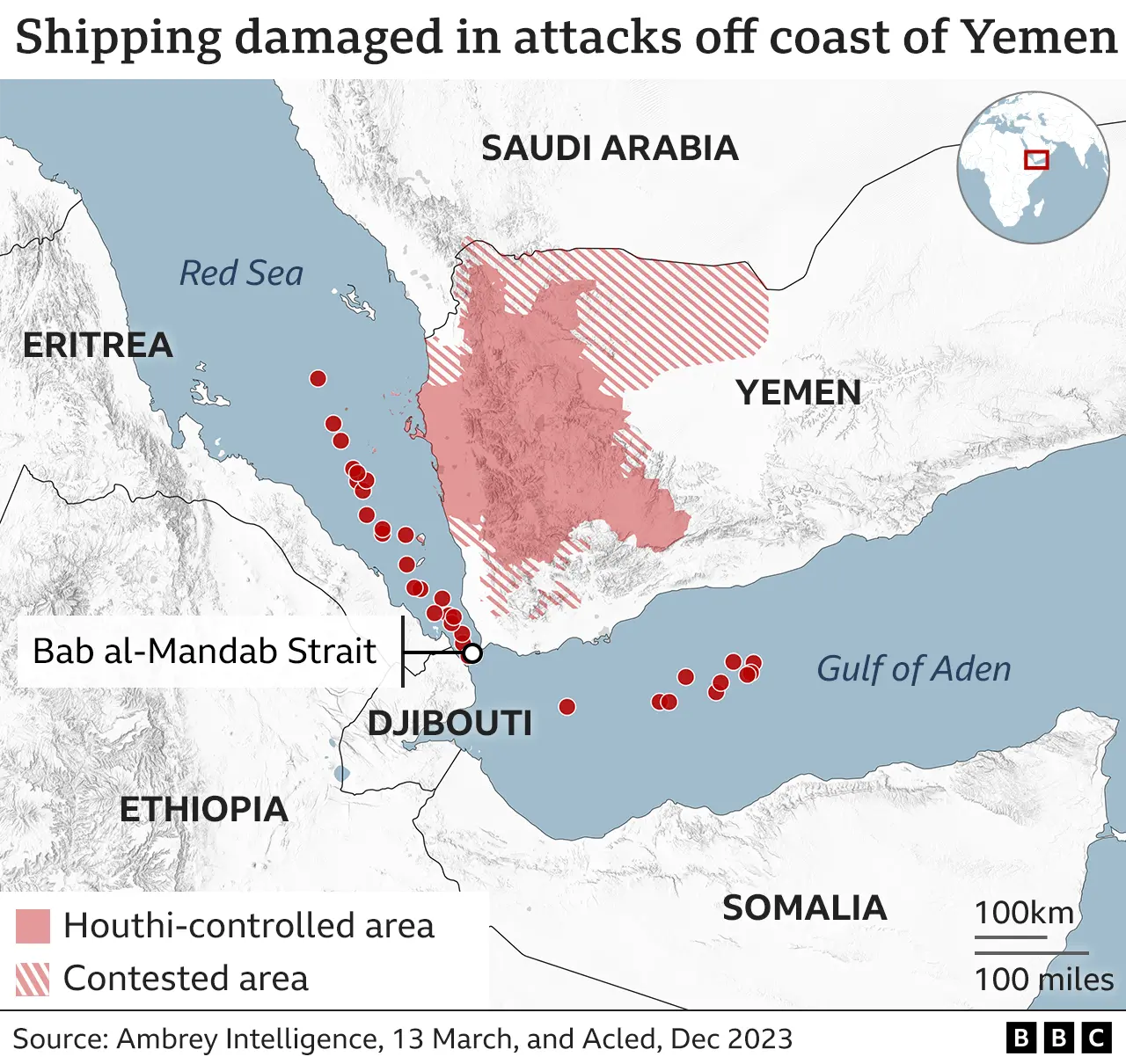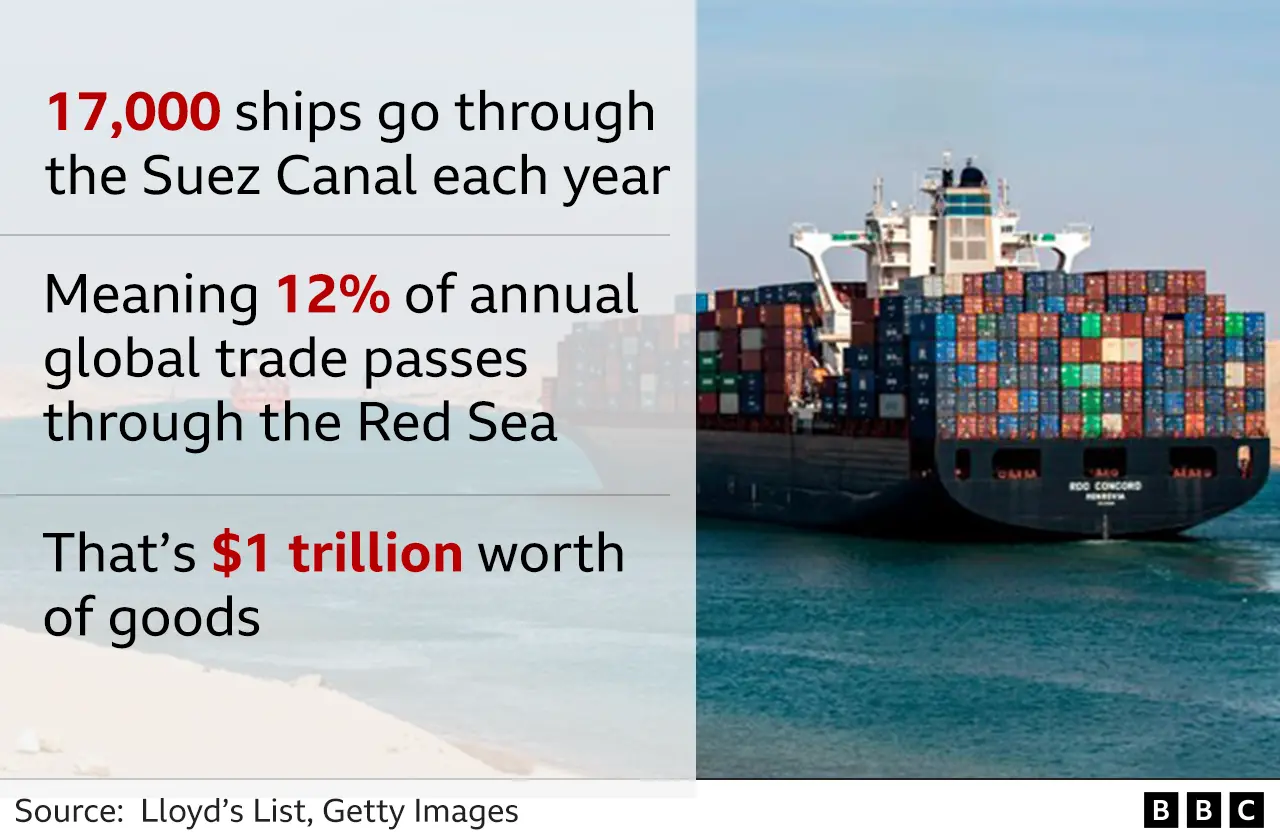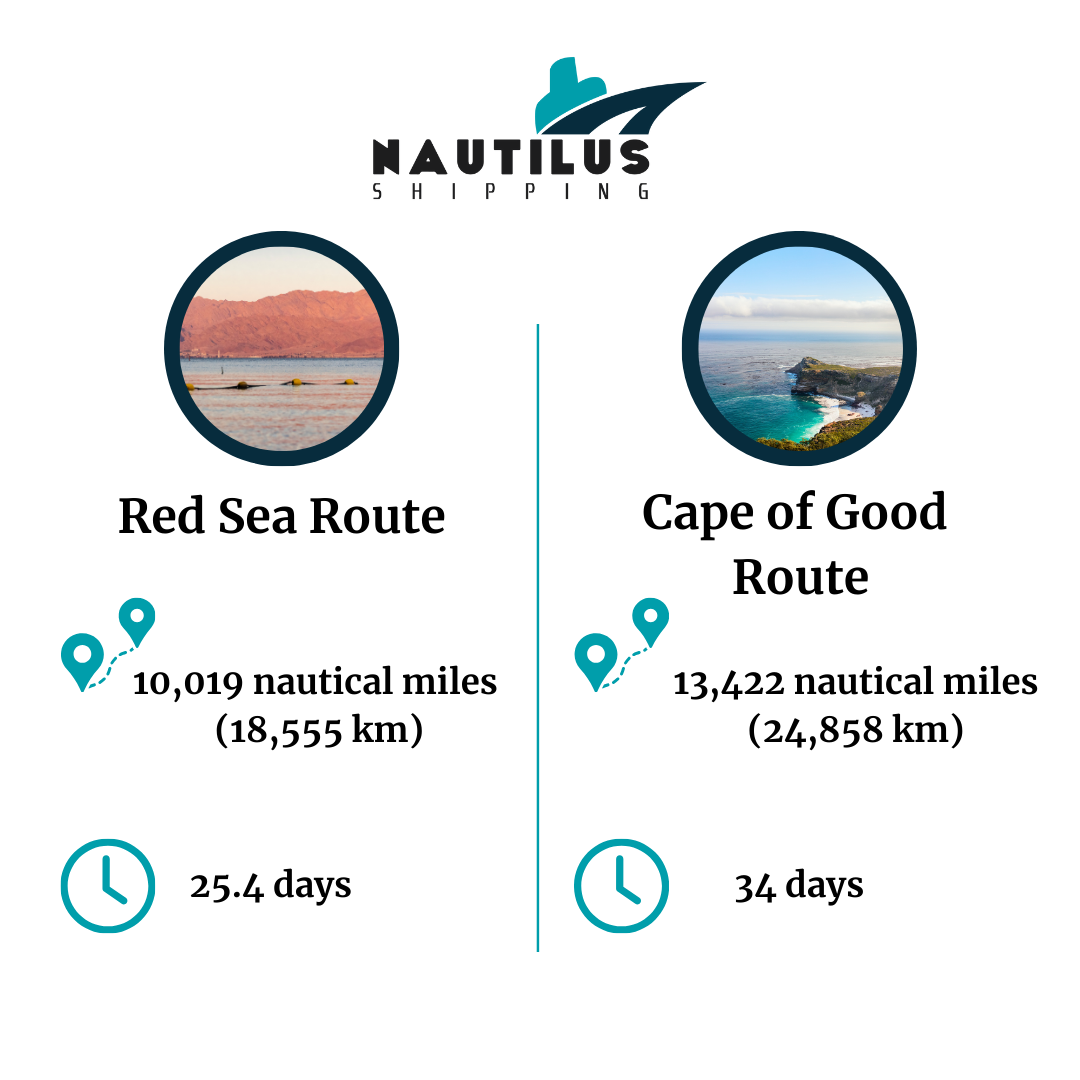The Red Sea has always been an important route for global trade, connecting Asia with Europe and North America. However, recent conflicts and attacks in the Red Sea region have created significant problems for shipping companies and their customers. Rising shipping costs, delays, and environmental concerns make the future uncertain. This blog looks at the current issues facing global trade due to the Red Sea attacks, how they affect companies and customers, the environmental impact, and what steps are being taken to handle these challenges.
Background and Causes of the Crisis
The Red Sea crisis began on October 19, 2023, when the Iran-backed Houthi movement in Yemen launched missiles and armed drones at Israel. The Houthis have since seized and launched aerial attacks against dozens of merchant and naval vessels in the Red Sea. The crisis is linked to the Israel-Hamas war, the Iran-Israel proxy conflict, and the Iran-US proxy conflict. The US and UK have led coalition air and missile strikes against the Houthis, while other countries are independently patrolling the waters near Yemen.
Timeline of Red Sea Attacks

On October 19, 2023, the US Navy destroyer USS Carney shot down three land-attack cruise missiles and several drones heading toward Israel. On October 27, 2023, two loitering munitions were fired in a northerly direction from the southern Red Sea. On October 31, 2023, an alert was triggered in Eilat regarding the penetration of hostile aircraft from the Red Sea. On November 1, 2023, the IDF intercepted an air threat fired from Yemen and identified south of Eilat. On November 8, 2023, a US MQ-9 Reaper drone was shot down off the coast of Yemen by Houthi air defenses.
What’s the Problem with the Red Sea Attacks?
Since December 2023, attacks on commercial ships by Yemeni Houthi rebels have escalated, causing trouble in the Red Sea, a critical pathway for global trade. These rebels are part of a larger group involving Iran, Hamas, Hezbollah, and other Iran-backed militias. They have attacked over 44 ships passing through the Red Sea. In response, a United States-led naval coalition called ‘Operation Prosperity Guardian’ was set up to protect this important route.
The Red Sea is the shortest sea route from Asia to Europe. About 15% of international shipping traffic and 33% of global container traffic, which includes around 1,500 commercial ships each month, pass through it. The Red Sea is also essential for industries that rely on fast deliveries, such as perishable goods, car manufacturing, chemical production, and semiconductors. The conflict and attacks have forced many shipping companies to reroute their vessels around the Cape of Good Hope, which is a much longer and costlier journey. This has added new challenges for global trade, affecting both costs and timelines.
What Are the Impacts on Shipping Companies?

The rerouting of ships around the Cape of Good Hope to avoid the Red Sea has become a major problem for countries dependent on global trade. This longer route adds about 4,575 nautical miles and 12-14 extra days to the trip. This delay has significant financial consequences for major shipping companies, which now face higher fuel costs—up to $2 million per trip—and increased insurance premiums, rising from 0.5% to 2% of the total shipment value.
To understand the impact better, let’s compare the two routes:

Based on the average speed of large container ships at 16.43 knots.
This shows that taking the Cape of Good Hope route adds 3,403 more nautical miles and almost 9 extra days. It also increases fuel use, raises costs, and requires more shipping vessels—going from 11 to 23 vessels per round trip. These changes have increased overall shipping costs between Asia, Europe, and North America by 250%. The additional expenses have made it more challenging for shipping companies to manage their costs, adding strain to global trade operations.
What Are the Impacts on Customers?
Customers are already feeling the effects of the Red Sea crisis in several ways. As shipping companies face higher costs, the prices of goods are expected to rise. This is especially concerning for essential items like oil, gas, and perishable goods. For instance, nearly 10% of the global oil supply and 8% of the global gas supply pass through the Red Sea. When this route is disrupted, shipping costs increase, which directly affects the prices of these essential products. Global trade is seeing a knock-on effect, with increased costs for end consumers.
Industries that rely on the Just-in-Time (JIT) manufacturing model, such as carmakers, electronics, and chemical companies, are also experiencing major delays and disruptions. Companies like Tesla, TATA Motors, and Volkswagen, which get parts and materials from Asia, have had to slow down or stop production because shipments are delayed. This situation could mean higher prices for customers and longer waiting times for products. The impacts on global trade can result in shortages of key goods, affecting many markets worldwide.
What is the Effect of the Red Sea Attacks on Sustainability?
The decision by many shipping companies to avoid the Red Sea and take the longer Cape of Good Hope route is not only increasing costs but also causing environmental harm. The Cape of Good Hope route adds around 3,403 nautical miles, leading to higher fuel consumption and more pollution for each trip. These changes pose a risk to the future of sustainable global trade practices.
Shipping is already a significant contributor to pollution, accounting for nearly 3% of global greenhouse gas emissions. According to the United Nations, the industry’s emissions have gone up by 20% over the last decade. As more ships are rerouted, the carbon footprint of the industry will increase, making it harder to reduce global emissions and fight climate change. As the maritime sector reroutes around the Red Sea, global trade is also forced to consider the environmental impact.
What is Being Done to Handle the Issue with the Red Sea?
Military Action
The US has launched an international naval operation to try to protect ships on the Red Sea route. The operation has been joined by countries including the UK, Canada, France, Bahrain, Norway, and Spain. US and UK naval forces have launched air strikes against Houthi rebel targets across Yemen. The targeted strikes are a clear message that the US and its partners will not tolerate attacks on their personnel or allow hostile actors to imperil freedom of navigation.
Diplomatic Efforts
The UN Security Council adopted Resolution 2722, which condemned the Houthi attacks and demanded that the Houthis immediately release the Galaxy Leader and its crew. The resolution was sponsored by the US and Japan and was supported by 11 members of the Security Council. The European Union has launched its own naval mission to protect cargo ships in the Red Sea.
Broader Effects on the Indian Ocean and Global Trade
The Red Sea crisis also has a ripple effect on other parts of the global maritime network, particularly the Indian Ocean. The Indian Ocean serves as a critical link in global trade, connecting major shipping routes between Asia, Africa, and Europe. The increased traffic in the Indian Ocean due to rerouting around the Red Sea has put additional pressure on this already busy maritime corridor. As ships are diverted from the Red Sea, the Indian Ocean sees more ships, adding to congestion and increasing transit times.

The impact extends to global trade beyond the Indian Ocean and Red Sea. Increased shipping times, rising fuel costs, and higher insurance premiums create a challenging environment for global trade. The maritime industry is now grappling with how to maintain cost-effective and timely routes to sustain the flow of goods worldwide.
The Red Sea attacks have exposed the weaknesses in global supply chains, especially for industries that depend on fast and efficient shipping. The ongoing conflict and attacks have led to higher costs, delays, and disruptions for shipping companies and customers. The choice to reroute ships around the Cape of Good Hope has also increased the industry’s carbon footprint, raising concerns about sustainability.
While some relief has come from current measures like naval patrols and improved security, the long-term effects of the crisis could lead to higher global prices and more strain on supply chains. As the situation develops, it becomes clear that the maritime industry and global trading nations must work together to find new solutions that balance security, cost, and sustainability, ensuring that shipping through the Red Sea remains a viable option for the future.
By addressing these challenges and building resilience, the shipping industry can navigate these troubled waters and continue to connect the world’s markets efficiently and sustainably, helping the smooth functioning of global trade. The Red Sea and Indian Ocean routes will remain central to global trade, and their stability is crucial for a balanced and thriving global economy.
FAQs about the Red Sea Attacks
1. How have the Red Sea attacks affected global trade?
The Red Sea attacks have significantly disrupted global trade by causing delays and increasing shipping costs. Many shipping companies have had to reroute their vessels around the Cape of Good Hope, a much longer and costlier route. This rerouting has added extra time to shipping schedules, increased fuel costs, and raised insurance premiums, which directly affects the prices of goods and the smooth functioning of global supply chains.
2. Why is the Red Sea such a critical route for maritime shipping?
The Red Sea is a vital maritime corridor connecting Asia with Europe and North America, making it essential for global trade. About 15% of international shipping traffic and 33% of global container traffic pass through the Red Sea each month. It is also a key route for the transportation of oil, gas, and other essential goods. Disruptions in this area have a significant impact on international trade and the global economy.
3. What challenges do shipping companies face due to the Red Sea crisis?
Shipping companies face several challenges due to the Red Sea crisis, including increased operational costs, longer transit times, and heightened risks of further attacks. The rerouting around the Cape of Good Hope has added thousands of nautical miles to voyages, which increases fuel consumption and requires more resources. Additionally, insurance premiums have risen, and the strain on shipping networks has led to delays and bottlenecks, affecting the entire supply chain.
4. What measures are being taken to address the impact of the Red Sea attacks?
To counter the impact of the Red Sea attacks, several measures are being implemented, including the United States-led ‘Operation Prosperity Guardian,’ which involves a coalition of 20 countries to protect commercial vessels and ensure safe passage. Companies are also exploring alternative routes, forming alliances to share resources, and adopting more sustainable practices to reduce costs. International cooperation and increased security measures are essential to maintain stability in the region and safeguard global trade routes.
5. What is the Red Sea route?
The Red Sea route is a major sea path that connects the Mediterranean Sea to the Indian Ocean. Ships travel through this route using the Suez Canal and the Bab al-Mandeb Strait. It’s an important route because it helps ships move between Europe and Asia much faster, without having to sail all the way around Africa. A lot of the world’s oil, gas, and other goods are transported through the Red Sea route, making it crucial for global trade.
